Intel Arc Alchemist: specs, features, release window, and everything we know
Everything we know about Intel Arc Alchemist
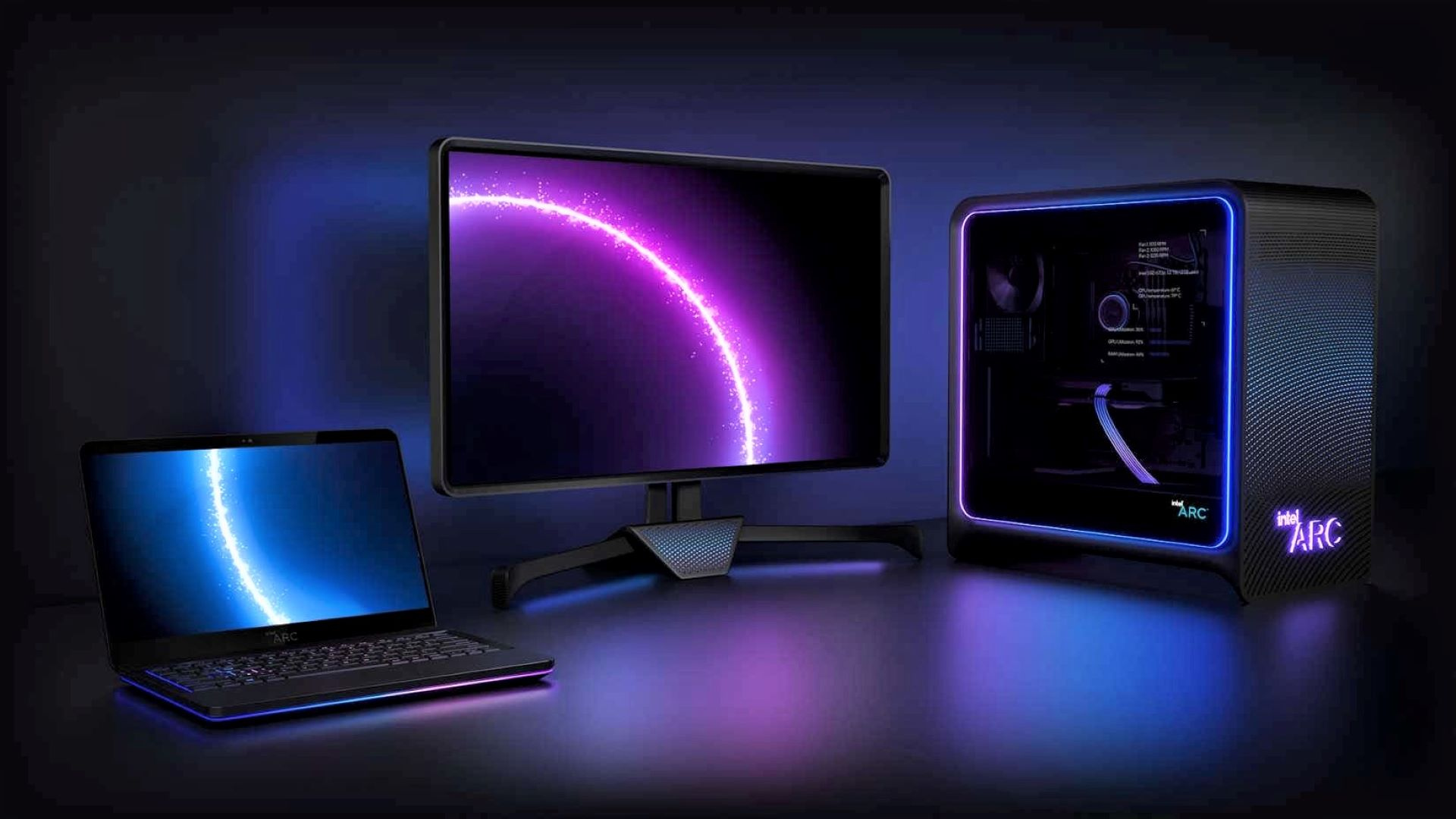
Having been originally announced in August 2021, Intel Arc Alchemist has taken shape over the past few months as more has come out about the hotly anticipated GPU line. Intel is vying to take on both AMD and Nvidia for the best graphics cards for gaming crown and could deliver a substantial blow to Team Red and Team Green at a time where video cards are incredibly hard to find for MSRP.
While rumors and sneak peeks were abound since the initial unveiling, January gave us a more definitive look at what to expect from Intel Arc Alchemist in its first form. As Intel itself states: 'A new player has entered the game'. We cannot currently say whether Intel is working on both budget and flagship video cards, but it is looking likely that the chipset manufacturer could have alternatives to some major video cards on the market right now from the competition.
It's more of a PC gaming ecosystem than just a line of discrete desktop graphics processors, though, here's everything we know about Intel Arc so far.
What is the Intel Arc Alchemist?
Intel Arc Alchemist is the first generation of a new line of GPUs made by the chipset manufacturer. It will be available as an APU for laptops, found in prebuilt machines, and as dedicated graphics cards. According to the press material, Intel has partnered with several established companies in the PC gaming space whose hardware will feature the Intel Arc Alchemist in some capacity. Such names include Alienware, Dell, MSI, Acer, Gigabyte, Lenovo, and Samsung.
Intel's roadmap shows the chipset manufacturer's intentions for several generations of graphics processors being on the horizon besides what we know about Alchemist. These are codenamed Battlemage, Celestial, and Druid respectively, and set to be released later down the line.
Intel Arc Alchemist release window
After much speculation has been made around the Q1 2022 release date for the Intel Arc Alchemist GPU, we have now received official word from the company on proceedings. Intel Arc will be coming to gaming laptops first in Q1 2022 (January - March) with dedicated desktop graphics cards launching in Q2 2022 (April - June) and Workstations will be last in Q3 2022 (July - September).
You’ve all been patient, and the first wave of #IntelArc GPUs are launching soon for notebooks. Desktops and workstations will soon follow! https://t.co/rXgX9dGEL1 pic.twitter.com/F6ubSUzSHMFebruary 17, 2022
This news is potentially going to be disappointing for those PC gamers wanting to get their hands on the Intel Arc Alchemist GPU in dedicated video card form to combat the spiked market. Although, we now can expect several video cards to begin rolling out in the next few coming months. If you've struggled to find RTX 3060 stock or RTX 3080 stock, then you may have an option here, too.
Sign up to the GamesRadar+ Newsletter
Weekly digests, tales from the communities you love, and more
How powerful will Intel Arc Alchemist be?
It appears as though will be seeing some of the best gaming laptops running Intel Arc Alchemist GPUs in addition to what is currently available on the market right now. As far as the dedicated graphics card front goes though, it has been rumored that the Intel Arc Alchemist could be as powerful as the RTX 3070 Ti, though this claim has yet to be officially verified. According to Videocardz, alleged specifications claim that the upcoming GPU features 4,096 GPU cores, 16GB GDDR6 memory, a boost clock of 2.2 - 2.5 GHz, and a 256-bit memory bus.
Arc Beast Canyon Lara Croft XeSS pic.twitter.com/PesBjcW83SFebruary 17, 2022
A recent Intel Investors event showed the Intel Arc Alchemist running Shadow of the Tomb Raider inside the 'Beast Canyon' small form factor custom gaming PC. Important to note that this title was optimized with the XeSS supersampling technology for optimal frame rates and performance, meaning that the now four-year-old title has been confirmed to receive the company's answer to DLSS and FSR.
We should point out that while Shadow of the Tomb Raider is a game that's getting on a bit now, having originally released in 2018, it's also still graphically demanding even on respectable hardware when those sliders are pushed to the max. It remains to be seen, however, how the Intel Arc Alchemist will handle newer releases with ray tracing and supersampling support in the future, but we'll keep you posted when we find out more.
What features will Intel Arc Alchemist include?
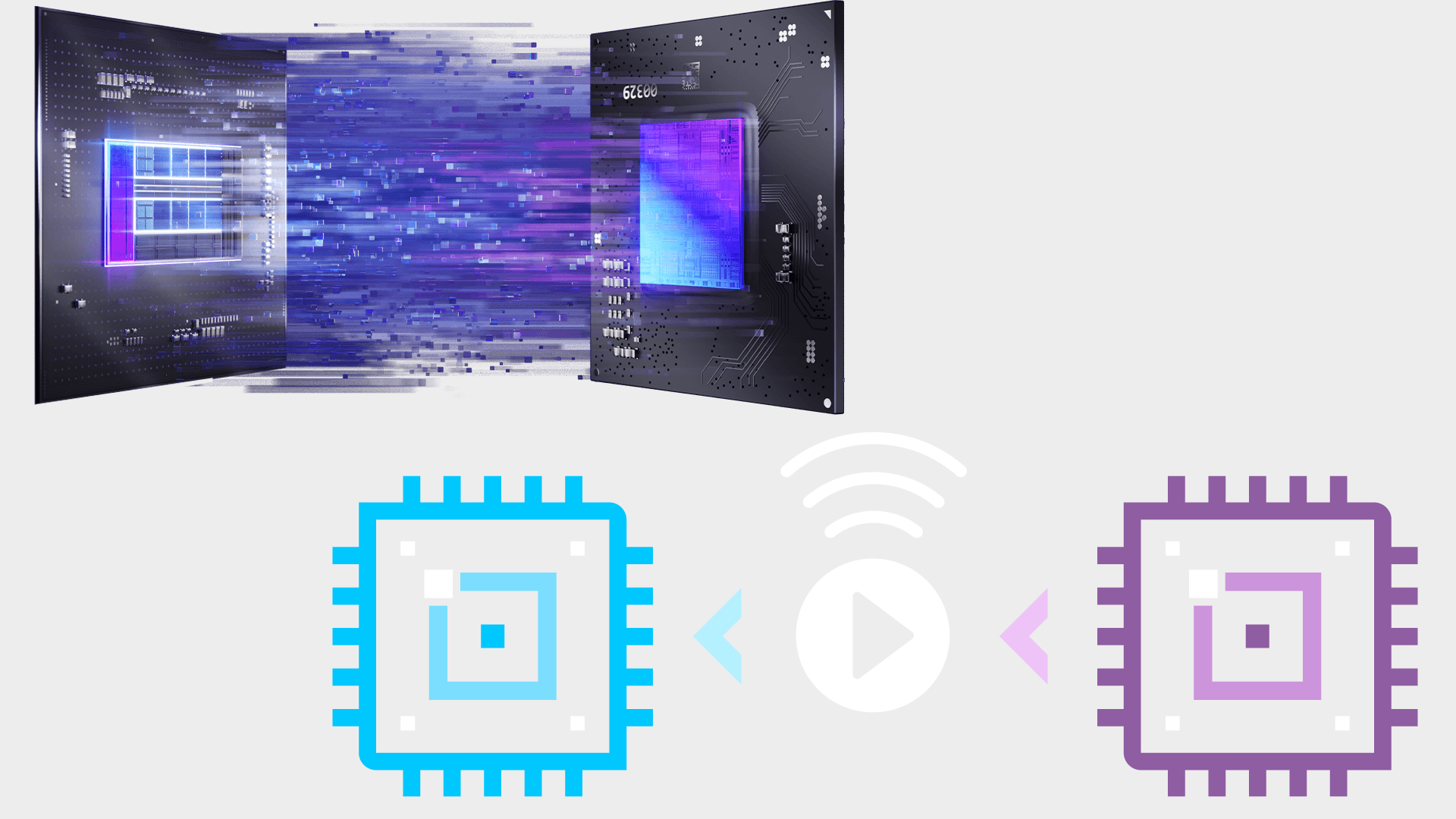
Intel Deep Link Technology is one of the major talking points when bringing up the potential strengths of the Intel Arc Alchemist. Deep Link essentially acts as a performance boost between Intel chipsets and graphics cards for gaming as well as tasks that require hardware acceleration (such as video production, streaming, and 3D modeling).
Deep Link appears to be primarily marketed towards laptop users with the Dynamic Power Share feature being of particular interest. This A.I. software is said to organically and efficently route power between your GPU and CPU depending on the task at hand for improved overall performance where you need it most. Intel is claiming this will lead to a choice between better battery life, improved gaming performance, or CPU rendering.
Taking a look at Intel's partners here reveals what we can expect from Deep Link technology from a hardware acceleration point of view. Popular programs listed include OBS and XSplit (streaming applications), as well as Magix (Movie Edit Pro and Video Pro) and Cyberlink (creators of PowerDirector). If you're someone who renders a lot of intensive processes with apps like these, then Deep Link technology could be a genuine game-changer.

Intel Xe Super Sampling is A.I. upscaling resolution technology that's similar to the likes of Nvidia DLSS 2.0 and AMD FidelityFX Super Resolution. Much like those existing technologies, XeSS uses an algorithm combined with the physical might of the GPU to optimize visual fidelity while reducing the physical workload done by the graphics processor itself. Think of it as a free frame rate boost with only a minor hit to the visuals when compared to native resolution performance, at least if we compare it with what's already available from the competition.
Interestingly, Intel has listed a number of games that will be receiving XeSS support in the near future, including the upcoming Death Stranding: Director's Cut and games such as Hitman III, Grid Legends, Grit, and The Rift Breaker. It's hard to describe exactly how XeSS will stack up against what's already out on the market, though, from what we've seen of the technology in action, its 4K performance is certainly commendable. See for yourself here:
The results above really do speak for themselves; The Rift Breaker looks seriously sharp with XeSS in motion, though we would have liked to have seen native 4K performance compared with XeSS in UHD. Really, it's going to come down to which developers will opt to optimize their newest titles with Intel's super sampling over Nvidia and AMD's existing technologies.
Intel Arc Alchemist Architecture
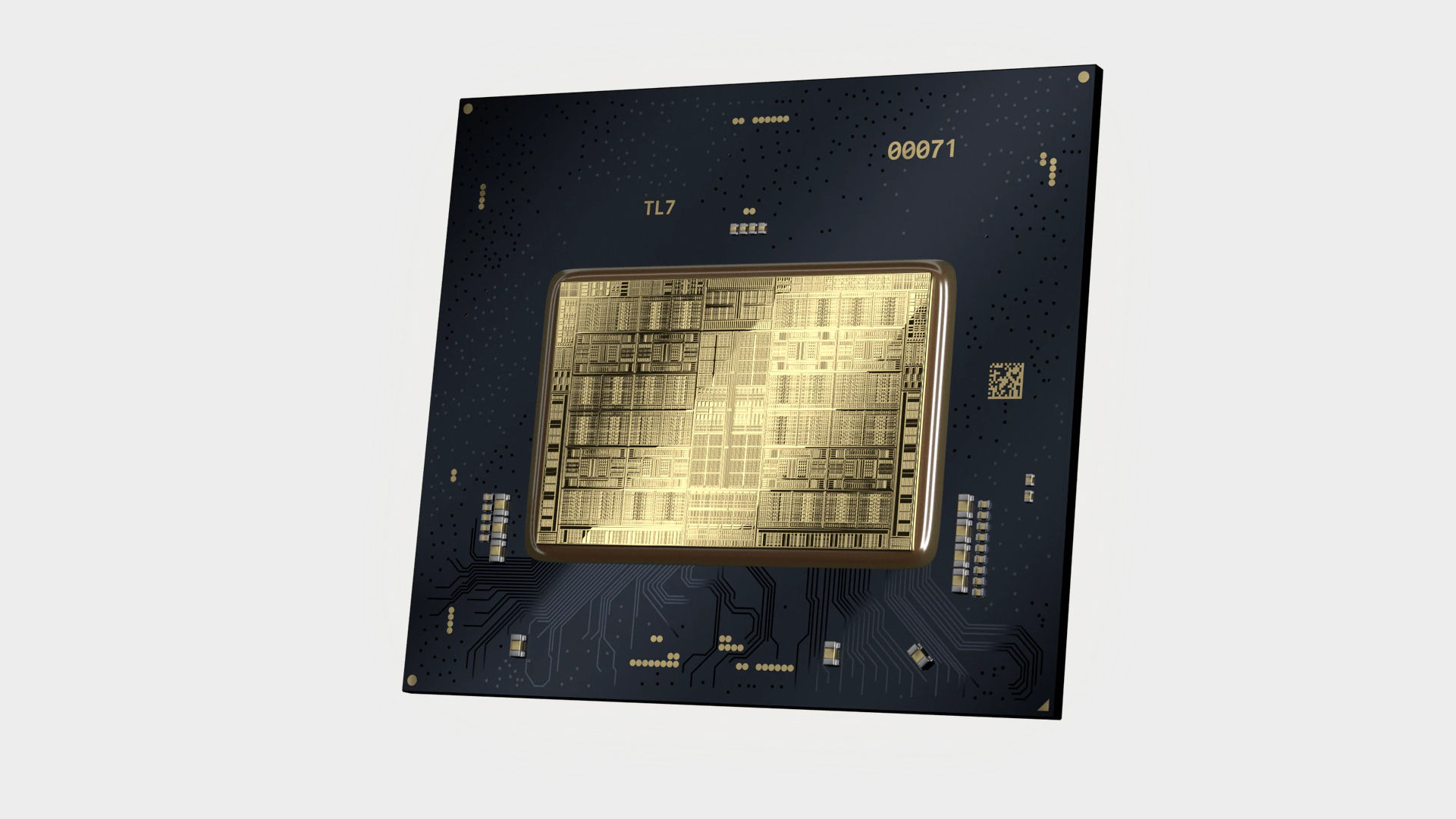
Intel Arc Alchemist is built on Xe-HPG Microarchitecture for high-performance graphics utilizing the company's proprietary software and hardware technologies in tandem. The manufacturer has stated that Xe-HPG has been "engineered from the ground-up to deliver breakthrough performance, efficiency, and scalability for gamers and creators."
Intel's Xe-cores will power the Alchemist GPUs, which are configured with 256-bit Vector engines to deliver hardware acceleration for both graphics and computing tasks, whereas the 1024-bit Matrix engines (also known as Xe Matrix extensions) are built to push A.I. functionality. Though not exactly one-to-one, think of this technology like Intel's version of Nvidia's RTX CUDA cores (for processing) and Tensor cores (for A.I. accelerated operations) respectively.
Much like the latest generations of AMD and Nvidia graphics cards, Intel's Xe HPG GPUs will feature both rasterization and ray tracing, as well as other fixed-function rendering techniques such as geometry processing, texture sampling, and pixel processing. This means that Intel Arc Alchemist will be optimized for both DirectX 12 Ultimate and Vulkan.
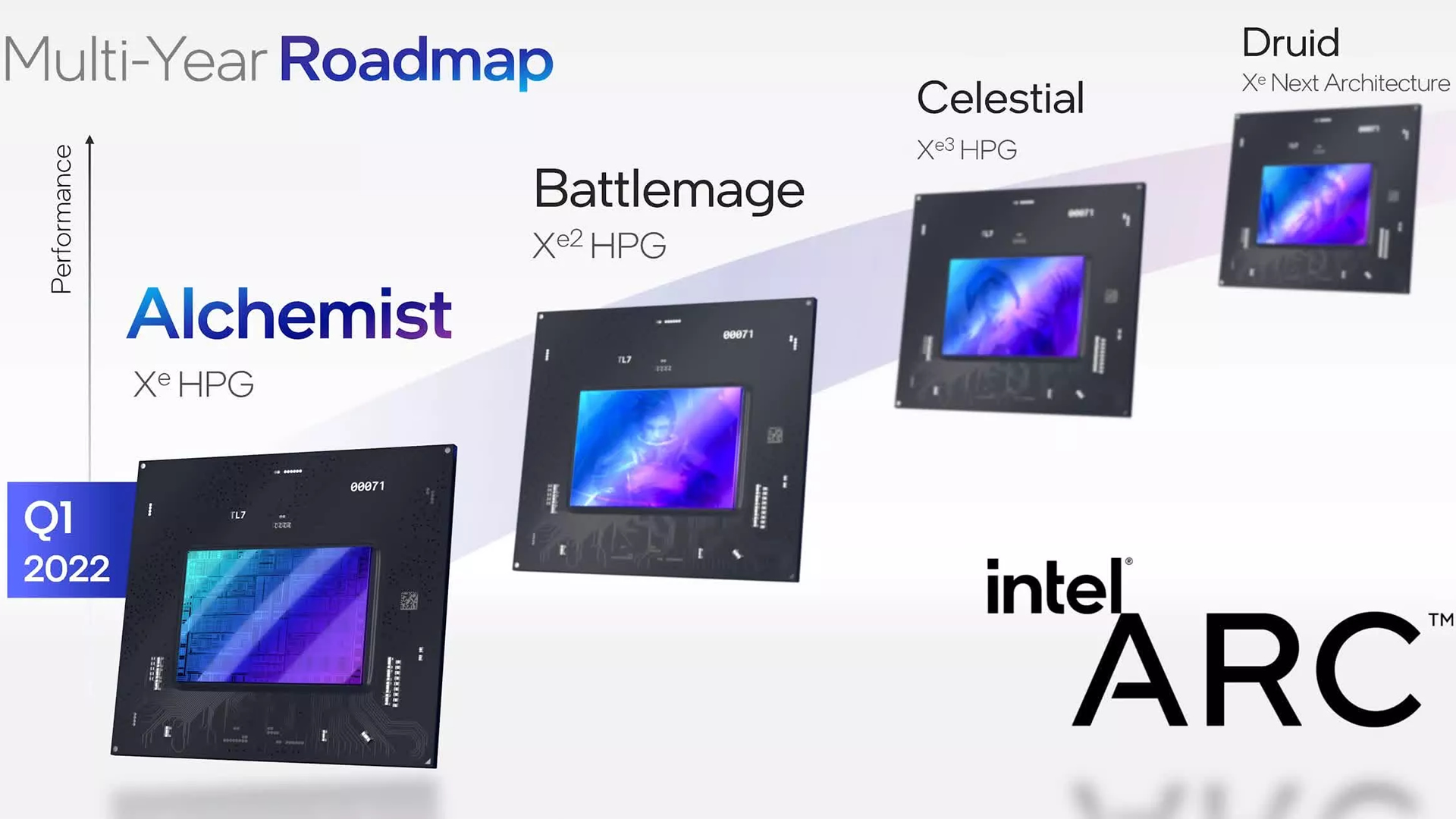
Can Intel really compete with AMD and Nvidia?
The million-dollar question is, with all said, can Intel Arc really compete against AMD and Nvidia? Everything that we've seen and been able to analyze suggests that Team Blue certainly has what it takes to give it an honest go of things, but widespread adoption is ultimately going to come down to what consumers want.
Here's the thing, for as incredible as we think the RTX 30 series is, and how impressed we've been by the RX 6000 series since launch, you just can't buy these video cards for their actual retail price. Intel has found itself in a very interesting position here. If it has a surplus of stock available through, not only prebuilt gaming PCs and gaming laptops, but the discrete video cards as well, Intel Arc really could become a force to be reckoned with.
It appears as though major graphics card manufacturers have partnered up with Intel for its Arc line, so we could very well see Intel Arc Alchemist video cards rolling out from the likes of Gigabyte, Asus, MSI, Zotac, EVGA, and more to deliver the goods at a time where the hardware drought has simply reached its apex.
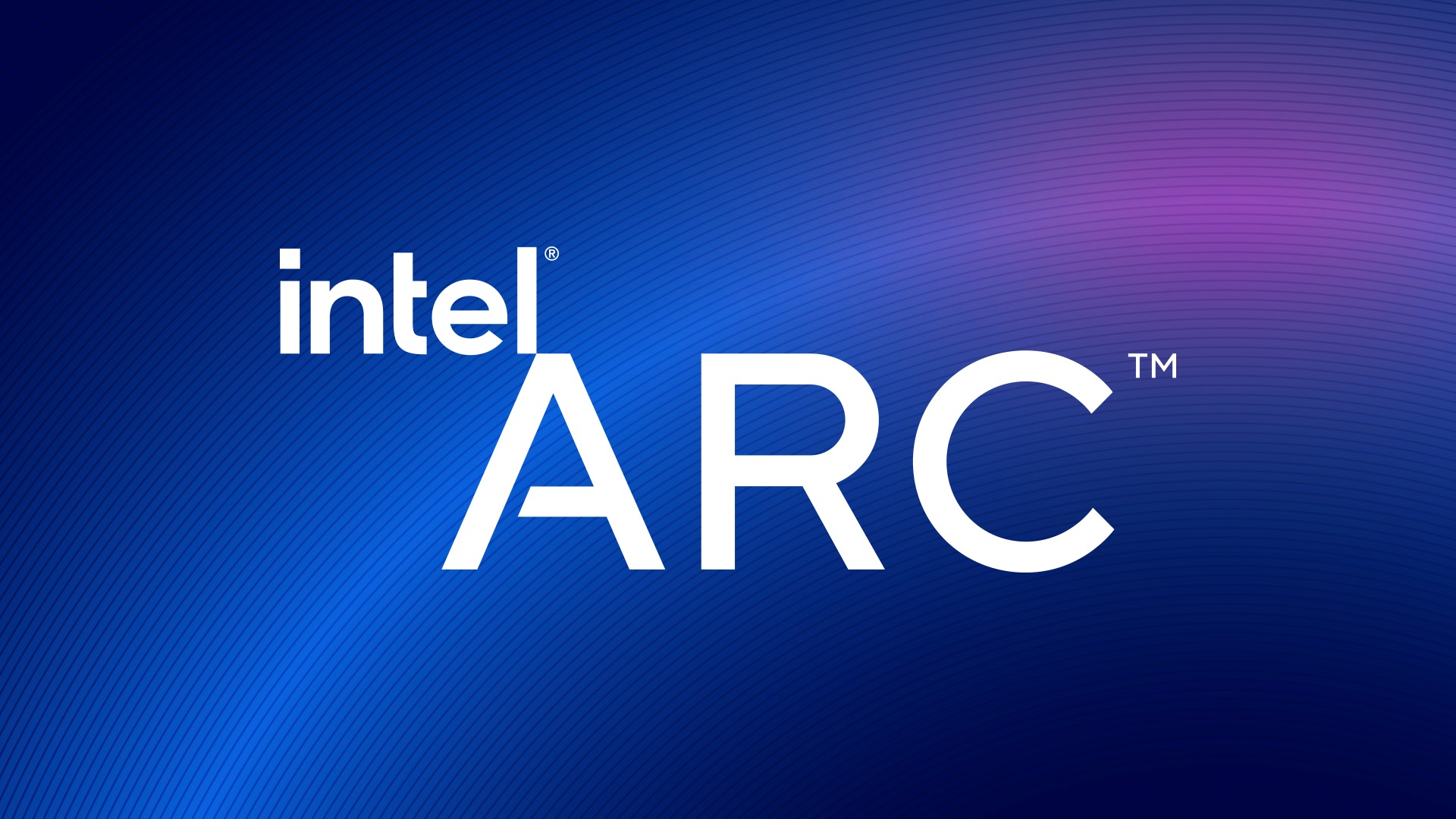
If Intel is planning to release a whole spectrum of Intel Arc Alchemist GPUs at varying power levels, not dissimilar to the current business model from the competition, then the performance is going to need to be comparable enough to what's already on offer with a price tag to match. For instance, RTX 3070 Ti stock launched at $599 for a video card capable of stellar 1440p and 4K performance. If Intel wants to compete here, its Mid-Tier option either needs to match that price point or undercut it. Aggressive pricing really could turn the tide in the company's favor, if it is smart about things.
We'll be bringing you all the latest Intel Arc Alchemist news as soon as it's hot off the presses across all form factors of the PC gaming scene. We're cautiously optimistic that this could be the right time for Intel to establish itself in the GPU market, though ultimately time will tell as we progress through the next few months.
Get your setup ready for Intel Arc with the best gaming chairs and best gaming desks.

Aleksha McLoughlin served as the Hardware Editor for GamesRadar from June 2021 until August 2022. Her main area of expertise was the PC gaming platform, which comprised buying guides, features, reviews, and news coverage on components and prebuilt machines. She was also responsible for gaming chairs and storage. She now works on a freelance basis while studying to become a university lecturer specializing in English for foreign territories. Prior to joining GamesRadar, she wrote for the likes of Expert Reviews, The Rory Peck Trust, No Clean Singing, Vinyl Chapters, and Tech Spark while also working with the BBC.


